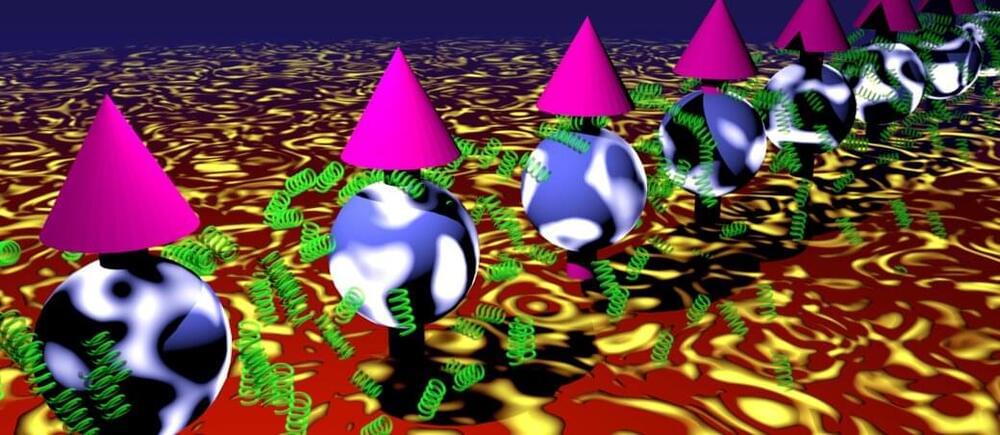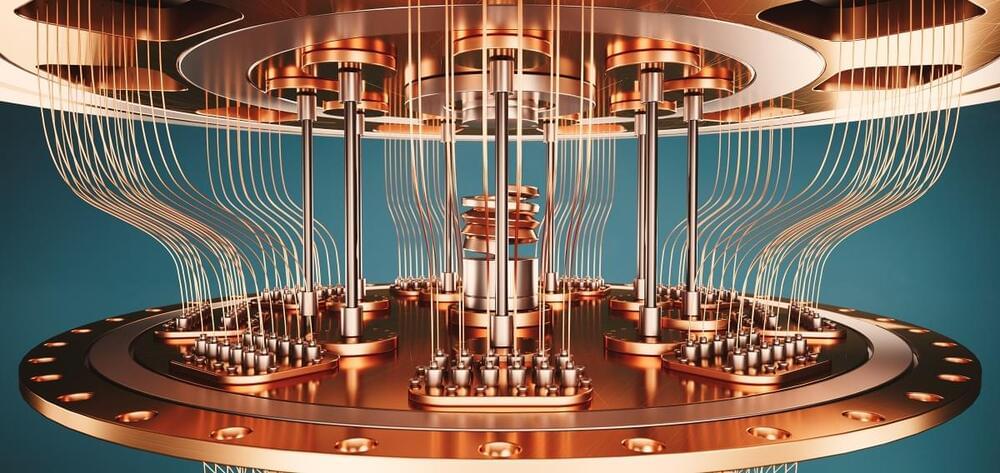Driven by a microcontroller Lisp port, this laptop-from-scratch project has the eventual goal of unlimited runtime via energy harvesting.



Researchers have found a way to predict the behavior of many-body quantum systems coupled to their environment. The work represents a way to protect quantum information in quantum devices, which is crucial for real-world applications of quantum technology.
In a study published in Physical Review Letters, researchers at Aalto University in Finland and IAS Tsinghua University in China report a new way to predict how quantum systems, such as groups of particles, behave when they are connected to the external environment. Usually, connecting a system such as a quantum computer to its environment creates decoherence and leaks, which ruin any information about what’s happening inside the system. Now, the researchers developed a technique that turns that problem into its a solution.
The research was carried out by Aalto doctoral researcher Guangze Chen under the supervision of Professor Jose Lado and in collaboration with Fei Song from IAS Tsinghua. Their approach combines techniques from two domains, quantum many-body physics and non-Hermitian quantum physics.

By default, every quantum computer is going to be a hybrid that combines quantum and classical compute. Microsoft estimates that a quantum computer that will be able to help solve some of the world’s most pressing questions will require at least a million stable qubits. It’ll take massive classical compute power — which is really only available in the cloud — to control a machine like this and handle the error correction algorithms needed to keep it stable. Indeed, Microsoft estimates that to achieve the necessary fault tolerance, a quantum computer will need to be integrated with a peta-scale compute platform that can manage between 10 to 100 terabits per second of data moving between the quantum and classical machine. At the American Physical Society March Meeting in Las Vegas, Microsoft today is showing off some of the work it has been doing on enabling this and launching what it calls the “Integrated Hybrid” feature in Azure Quantum.
“With this Integrated Hybrid feature, you can start to use — within your quantum applications — classical code right alongside quantum code,” Krysta Svore, Microsoft’s VP of Advanced Quantum Development, told me. “It’s mixing that classical and quantum code together that unlocks new types, new styles of quantum algorithms, prototypes, sub routines, if you will, where you can control what you do to qubits based on classical information. This is a first in the industry.”

The most famous one is the cell phone itself: Captain Kirk’s communicator inspired the folks at Motorola to make the first handheld mobile device in 1973. Star Trek: The Original Series (popularly called TOS) from the 1960s also inspired video conferencing. But things started to amp up when, in 1987, Star Trek: The Next Generation (aka TNG) hit the floors, with Sir Patrick Stewart in the lead. It became one of the most syndicated shows on television—which is how I discovered it in mid-90s India on the Star network. It fundamentally impacted my life, inspiring me to become the technology writer I am today.
But more than me, this show heralded more technological concepts that are becoming increasingly real. The LCARS computer on the Galaxy-Class USS Enterprise D is basically the foundation of what Google is today. Google’s former head of search, Amit Singhal, often said that the company is “trying to build the Star Trek computer”.

A 1960s nuclear research lab in the North of England will host a new quantum computing facility under plans drawn up by a Silicon Valley technology company.
PsiQuantum is to set up a research hub at the Daresbury Laboratory in Cheshire, using the facility’s state of the art cooling systems to develop its technology.
PsiQuantum, which is backed by BlackRock, Microsoft and Baillie Gifford, was set up by professors at the University of Bristol and Imperial College London but its founders moved to Silicon Valley in 2016 under advice from investors.

Among “the jobs once done by God [that] can be done by natural entities” there is life after death. Dawkins “frequently affirms that there is no life after death”, but Steinhart shows that this is inconsistent with Dawkins’ own convictions. Dawkins “should have argued that false religious theories of life after death can be replaced with more plausible scientific theories of life after death” [**].
Steinhart describes two plausible scientific theories of life after death: promotion to the higher level of reality of the simulators, and revisions of entire lives in new universes, each better than the previous life and universe. Worth noting, promotion could preserve memories and implement “the ancient idea of the resurrection of the body.” These theories of life after death are only sketched in this book, see Steinhart’s previous book “Your Digital Afterlives: Computational Theories of Life after Death” for more. See also my review of “Your Digital Afterlives” in “Tales of the Turing Church” (Chapter 12).
In summary, Steinhart builds a thorough and philosophically consistent spiritual naturalism, inspired by Dawkins, which offers the main mental benefits of religion. I like (actually I love) philosophy, but I try to keep mine as simple and working-class as possible, because many people don’t have the patience (or the time) for too much philosophical sophistication. I think the two approaches are complementary. So I use the term “religion” for the spiritual naturalism of Dawkins and Steinhart, and I use the simple term “God” now and then.
I’m quite happy with this resolution of the conflict between determinism and free will…
By ‘free will’ do you mean ability to make an utterly random decision? But what is ‘utterly random’? If something’s unpredictable, it’s all but indistinguishable from being random, no?
Computer scientist Amit Sahai, PhD, is asked to explain the concept of zero-knowledge proofs to 5 different people; a child, a teen, a college student, a grad student, and an expert. Using a variety of techniques, Amit breaks down what zero-knowledge proofs are and why it’s so exciting in the world of cryptography.
Amit Sahai, PhD, is a professor of computer science at UCLA Samueli School of Engineering.
Still haven’t subscribed to WIRED on YouTube? ►► http://wrd.cm/15fP7B7
Listen to the Get WIRED podcast ►► https://link.chtbl.com/wired-ytc-desc.
Want more WIRED? Get the magazine ►► https://subscribe.wired.com/subscribe/splits/wired/WIR_YouTu…ription_ZZ
Follow WIRED:
Instagram ►►https://instagram.com/wired.
Twitter ►►http://www.twitter.com/wired.
Facebook ►►https://www.facebook.com/wired.
Get more incredible stories on science and tech with our daily newsletter: https://wrd.cm/DailyYT
Since the advent of quantum mechanics, the field of physics has been divided into two distinct areas: classical physics and quantum physics. Classical physics deals with the movements of everyday objects in the macroscopic world, while quantum physics explains the strange behaviors of tiny elementary particles in the microscopic world.
Many solids and liquids are made up of particles that interact with each other at close distances, leading to the creation of “quasiparticles.” Quasiparticles are stable excitations that act as weakly interacting particles. The concept of quasiparticles was introduced in 1941 by Soviet physicist Lev Landau and has since become a crucial tool in the study of quantum matter. Some well-known examples of quasiparticles include Bogoliubov quasiparticles in superconductivity, excitons in semiconductors.
Semiconductors are a type of material that has electrical conductivity between that of a conductor (such as copper) and an insulator (such as rubber). Semiconductors are used in a wide range of electronic devices, including transistors, diodes, solar cells, and integrated circuits. The electrical conductivity of a semiconductor can be controlled by adding impurities to the material through a process called doping. Silicon is the most widely used material for semiconductor devices, but other materials such as gallium arsenide and indium phosphide are also used in certain applications.

Recent advances in human stem cell-derived brain organoids promise to replicate critical molecular and cellular aspects of learning and memory and possibly aspects of cognition in vitro. Coining the term “organoid intelligence” (OI) to encompass these developments, we present a collaborative program to implement the vision of a multidisciplinary field of OI. This aims to establish OI as a form of genuine biological computing that harnesses brain organoids using scientific and bioengineering advances in an ethically responsible manner. Standardized, 3D, myelinated brain organoids can now be produced with high cell density and enriched levels of glial cells and gene expression critical for learning. Integrated microfluidic perfusion systems can support scalable and durable culturing, and spatiotemporal chemical signaling.